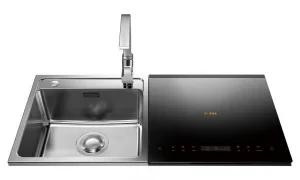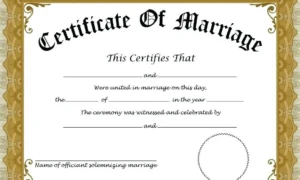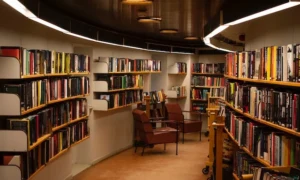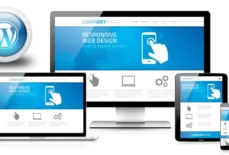Graphic design, an ever-evolving art form, has traversed a fascinating journey through the decades, leaving an indelible mark on visual communication. From the early days of print to the digital age, each era has brought forth distinctive styles, techniques, and influential movements. Let’s embark on a captivating journey through the evolution of graphic design, exploring its transformative phases and the impact it has had on the world.
1. The Birth of Graphic Design (1900s-1920s)
The roots of graphic design can be traced back to the early 20th century, with the emergence of Art Nouveau and the birth of commercial printing. Art Nouveau brought ornate, organic forms to design, influencing everything from posters to packaging. The development of new printing technologies, such as lithography, fueled the growth of graphic design in advertising and editorial.
2. The Golden Age of Poster Design (1930s-1940s)
The interwar period saw a surge in poster design, particularly during the Art Deco movement. Streamlined shapes, bold typography, and vibrant colors defined this era. Iconic posters, like those created by A.M. Cassandre, became symbols of the times, reflecting the dynamism of industrialization and transportation.
3. Mid-Century Modernism (1950s-1960s)
The post-war period brought about a design revolution with the rise of Mid-Century Modernism. Clean lines, minimalism, and a focus on functionality became hallmarks of this era. Designers like Saul Bass and Paul Rand pioneered corporate identity and logo design, shaping the visual identities of major brands.
4. The Psychedelic Sixties (1960s-1970s)
As societal norms shifted, graphic design embraced the counterculture movement. The psychedelic and hippie aesthetics influenced album covers, concert posters, and even mainstream advertising. Bold colors, intricate patterns, and experimental typography became synonymous with this era.
5. The Digital Revolution (1980s-1990s)
The advent of personal computers in the 1980s marked a turning point in graphic design. Desktop publishing and software like Adobe Illustrator and Photoshop revolutionized the industry. Designers explored new possibilities in digital art, and the era witnessed the birth of pixel art, early web design, and the rise of corporate branding.
6. The Rise of Web Design (1990s-2000s)
With the widespread adoption of the internet, graphic design found a new frontier in web design. The 1990s brought forth experimentation with animated GIFs, flashy backgrounds, and vibrant color schemes. As the internet matured, web design evolved into a more user-centric and aesthetically refined discipline.
7. Contemporary Eclecticism (2000s-Present)
The 21st century has seen graphic design embrace a diverse range of styles, thanks to the accessibility of design tools and the global exchange of ideas. Flat design, material design, and a resurgence of retro aesthetics coexist in a landscape where designers have the freedom to experiment and blend styles seamlessly.
8. The Future: A Fusion of Art and Technology
As we look to the future, the lines between graphic design and technology continue to blur. Augmented reality, virtual reality, and artificial intelligence are becoming integral to design practices. The future promises a fusion of art and technology, where designers will navigate uncharted territories, pushing the boundaries of visual communication.
Are you looking for a Graphic Design Course? Contact us
Conclusion: A Tapestry of Creativity
The evolution of graphic design is a rich tapestry woven with creativity, innovation, and cultural shifts. Each decade has contributed to the diverse and dynamic field we know today. As we continue into the future, graphic design remains a powerful force, shaping how we perceive and interact with the visual world around us.
From the ornate elegance of Art Nouveau to the sleek simplicity of modern design, the journey of graphic design mirrors the evolution of society itself. It is a testament to the adaptability, creativity, and enduring impact of this influential art form. As we stand on the precipice of new design frontiers, one can’t help but be excited about the visual wonders that the future holds.
The Evolution of Graphic Design: A Journey Through Decades
Graphic design, an ever-evolving art form, has traversed a fascinating journey through the decades, leaving an indelible mark on visual communication. From the early days of print to the digital age, each era has brought forth distinctive styles, techniques, and influential movements. Let’s embark on a captivating journey through the evolution of graphic design, exploring its transformative phases and the impact it has had on the world.
1. The Birth of Graphic Design (1900s-1920s)
The roots of graphic design can be traced back to the early 20th century, with the emergence of Art Nouveau and the birth of commercial printing. Art Nouveau brought ornate, organic forms to design, influencing everything from posters to packaging. The development of new printing technologies, such as lithography, fueled the growth of graphic design in advertising and editorial.
2. The Golden Age of Poster Design (1930s-1940s)
The interwar period saw a surge in poster design, particularly during the Art Deco movement. Streamlined shapes, bold typography, and vibrant colors defined this era. Iconic posters, like those created by A.M. Cassandre, became symbols of the times, reflecting the dynamism of industrialization and transportation.
3. Mid-Century Modernism (1950s-1960s)
The post-war period brought about a design revolution with the rise of Mid-Century Modernism. Clean lines, minimalism, and a focus on functionality became hallmarks of this era. Designers like Saul Bass and Paul Rand pioneered corporate identity and logo design, shaping the visual identities of major brands.
4. The Psychedelic Sixties (1960s-1970s)
As societal norms shifted, graphic design embraced the counterculture movement. The psychedelic and hippie aesthetics influenced album covers, concert posters, and even mainstream advertising. Bold colors, intricate patterns, and experimental typography became synonymous with this era.
5. The Digital Revolution (1980s-1990s)
The advent of personal computers in the 1980s marked a turning point in graphic design. Desktop publishing and software like Adobe Illustrator and Photoshop revolutionized the industry. Designers explored new possibilities in digital art, and the era witnessed the birth of pixel art, early web design, and the rise of corporate branding.
6. The Rise of Web Design (1990s-2000s)
With the widespread adoption of the internet, graphic design found a new frontier in web design. The 1990s brought forth experimentation with animated GIFs, flashy backgrounds, and vibrant color schemes. As the internet matured, web design evolved into a more user-centric and aesthetically refined discipline.
7. Contemporary Eclecticism (2000s-Present)
The 21st century has seen graphic design embrace a diverse range of styles, thanks to the accessibility of design tools and the global exchange of ideas. Flat design, material design, and a resurgence of retro aesthetics coexist in a landscape where designers have the freedom to experiment and blend styles seamlessly.
8. The Future: A Fusion of Art and Technology
As we look to the future, the lines between graphic design and technology continue to blur. Augmented reality, virtual reality, and artificial intelligence are becoming integral to design practices. The future promises a fusion of art and technology, where designers will navigate uncharted territories, pushing the boundaries of visual communication.
Conclusion: A Tapestry of Creativity
The evolution of graphic design is a rich tapestry woven with creativity, innovation, and cultural shifts. Each decade has contributed to the diverse and dynamic field we know today. As we continue into the future, graphic design remains a powerful force, shaping how we perceive and interact with the visual world around us.
From the ornate elegance of Art Nouveau to the sleek simplicity of modern design, the journey of graphic design mirrors the evolution of society itself. It is a testament to the adaptability, creativity, and enduring impact of this influential art form. As we stand on the precipice of new design frontiers, one can’t help but be excited about the visual wonders that the future holds.








































